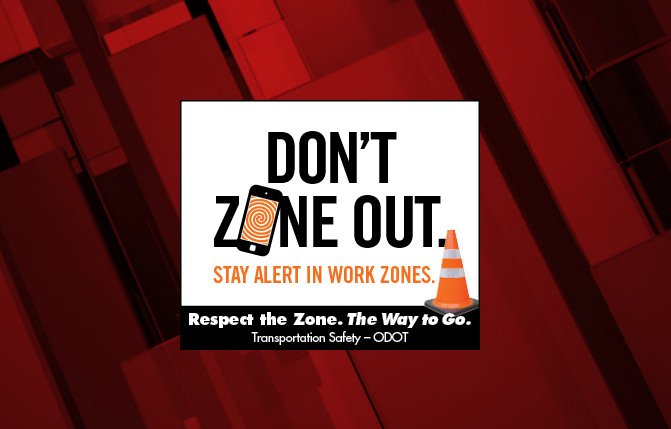May’s the month to focus on highway work zone safety

Pandemic means lighter traffic, but road projects still underway
SALEM, Ore. (KTVZ) -- Traffic on Oregon roads is lighter these days, but our work zones are still humming.
May is Work Zone Safety Month in Oregon, a chance to remind drivers: When you see orange, slow down and expect delays. As construction ramps up across the state this spring, keep an eye out for work zones, pay attention and watch your speed. It could save a life.
Oregon saw an average of 331 work zone crashes involving injuries each year between 2014 and 2018. During the same time, it saw an average of 24 crashes each year involving serious injuries or deaths.
An average of 532 people were injured and 26 killed or seriously injured each year between 2014 and 2018. Twenty-eight people were killed in work zone crashes. Of those, four were workers. Another 14 workers were injured.
“These types of injuries and deaths are preventable,” says Troy Costales, ODOT’s Transportation Safety Division Administrator. “Most work zone crashes happen because drivers aren’t paying attention. Taking your eyes or your attention off the road for even a few seconds can have deadly consequences.”
Distracted driving causes the majority of work zone crashes, followed by speeding and driving too fast for conditions. Oregon State Police, encourages drivers to always drive safe, obey speed limits, and to be especially attentive when you see highway workers and work zones. If you choose not to drive safe in highway work zones, OSP will be there watching to ensure our highway workers get home safely.
What can you do?
- Pay attention when you see orange signs, barrels, cones and barricades.
- Obey flaggers and flagging devices.
- Try to put yourself “in the zone” before you even get to the work zone. (Be mentally prepared and alert.)
- Drive like you work there.
- Obey all speed signs and remember to drive for conditions.
- Call 511 or visit www.TripCheck.com to check routes, work zones, road and weather conditions before you head out.
- Move over to give workers more room when possible. Work zone lanes are often narrow.
- Expect work zones in rural areas and remember that many projects are done at night.
- Remember fines in work zones double whether workers are present or not.
Most of all, remember that the roads may seem empty – but they’re not. Keep driving like you work here, because we’re still at work.
“The highway construction industry in Oregon is continuing to work on badly needed projects to improve our roads and bridges and keep our state’s economy moving,” said Mike Salsgiver, executive director of Associated General Contractors Oregon-Columbia Chapter. “With reduced traffic counts, these projects can be completed at an accelerated rate, while our workers take all necessary precautions to stay safe and keep working. We encourage those driving on Oregon’s roads and highways to follow the speed limit and protect our workers.”
ODOT and contractors are increasing the use of automated flagging assisted devices. These devices improve flagger safety by putting distance between them and traffic. Drivers can expect to see the devices on two lane highways throughout Oregon.
Help everyone stay safe and healthy. Slow down and pay attention in work zones. Not only in May, but year round.
More information: Learn more about our efforts to reduce injuries and deaths in work zones at https://www.oregon.gov/odot/Safety/Pages/Work-Zone.aspx. And see how we use automated flagging devices to help protect flaggers in work zones across the state https://www.youtube.com/watch?v=UULaZKhpaEw.